Silicon Motion SM2256 SSD Controller Preview: TLC for Everyone
by Kristian Vättö on June 17, 2015 8:15 AM EST- Posted in
- Storage
- SSDs
- TLC
- Silicon Motion
- SM2256
Sequential Read Performance
For full details of how we conduct our Iometer tests, please refer to this article.
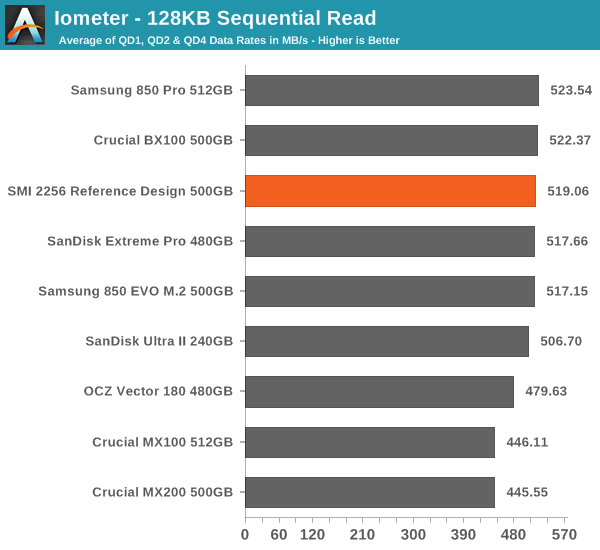
Despite the somewhat low random read performance, sequential read is strong in the SM2256.
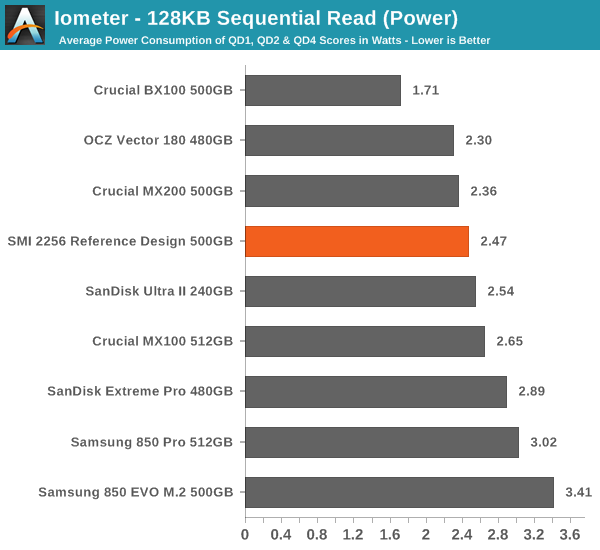
Power consumption is up from the SM2246EN, but still moderate.
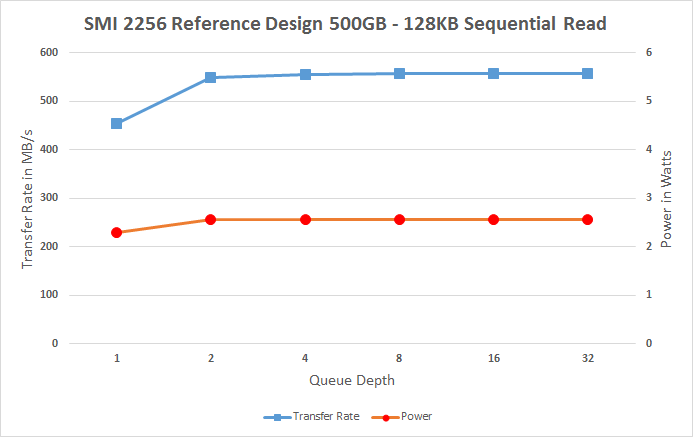 |
|||||||||
Scaling is also perfect in the sense that SM2256 reaches its maximum SATA 6Gbps limited throughput at QD2.
Sequential Write Performance
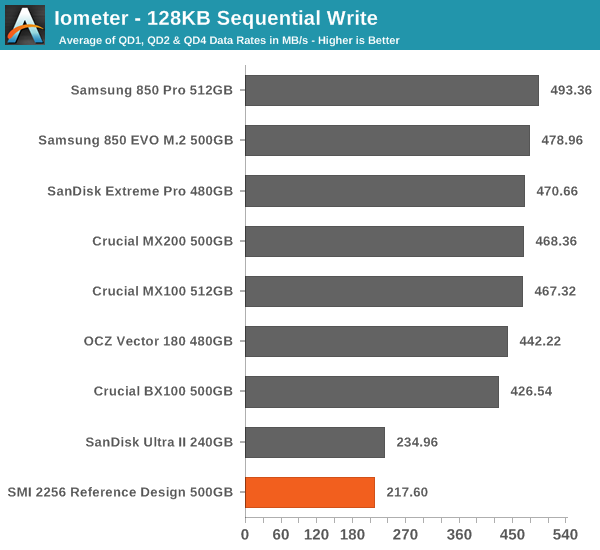
Unfortunately, sequential write performance isn't as good. Low write performance is a known quantity of TLC NAND, but given the 500GB capacity I was expecting a little more because even the Ultra II is faster despite having only half the NAND.
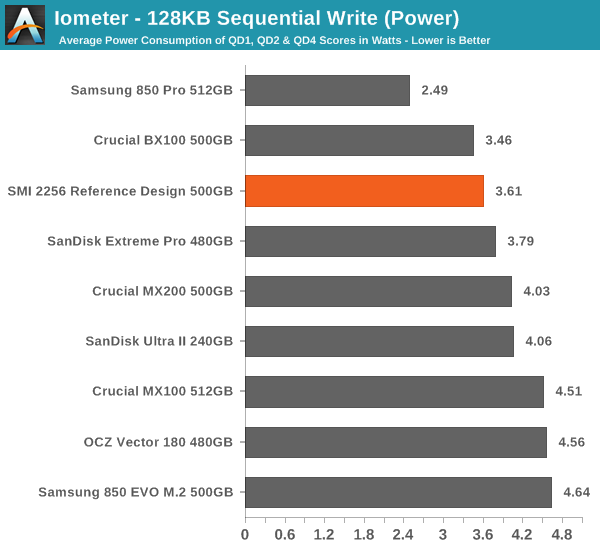
Surprisingly power consumption doesn't go up compared to the SM2246EN, but given the poor throughput the efficiency isn't anywhere near as good.
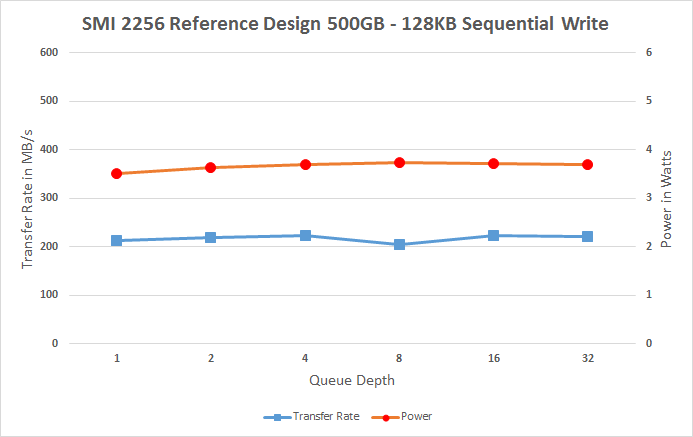 |
|||||||||










34 Comments
View All Comments
Oxford Guy - Saturday, June 20, 2015 - link
Apple reportedly abandoned TLC because of the defects.serndipity - Saturday, June 20, 2015 - link
Have noticed that, as the NAND manufacturers shrunk the die process, issues with both MLC and TLC based SSDs have begun surfacing.Glad to see that Samsung, with its 3D NAND technology, used in the 850 PRO and 850 EVO, has been able to return to a much more stable process size (e.g. almost 3X that of current MLC).
viktorp - Thursday, July 2, 2015 - link
TLC NAND isn’t welcome at any price.Ask yourself simple question – what parts of your personal data will you trust to storage designed specifically to have 10 times less endurance than technology it is supposed to replace (MLC).
I am upset just thinking that someone thought of it as being a good idea.
cbjwthwm - Thursday, September 3, 2015 - link
The big problem here is a newer gen product at 2x the capacity of the equivalent architecture Sandisk Ultra II which for the most part gets outperformed by it. It would be interesting to see what the shipping firmware of this type of product eventually performed like compared to the reference design, but otherwise I see no reason to consider this vs the Marvell-based Ultra II.